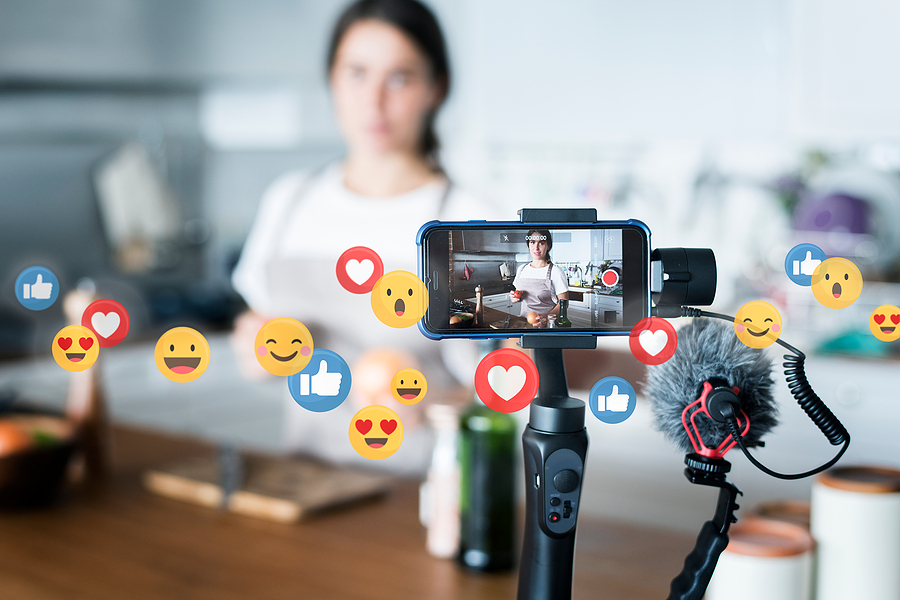
Deeper Brand Meaning Drives Business Growth
October 30th, 2024 Posted by Emergent Brand Beliefs, Brand differentiation, brand marketing, brand meaning, brand messaging, Brand Soul, Consumer insight, Emotional relevance, engagement, Higher Purpose, Mission 0 comments on “Deeper Brand Meaning Drives Business Growth”The benefits of a focused strategic platform and message
There is no substitute for a relevant, focused brand story that capitalizes on a form of ‘secret sauce’ — conjuring added meaning, purpose and value to support why consumers should join your brand’s “movement.”
These transformational moments in business trajectory are an outcome of amplifying a story that rises beyond your products to focus on a higher purpose platform. One that unifies the brand value proposition in a more impactful, powerful narrative.
It may seem counterintuitive to push hard on meaning and mission ahead of product features and benefits, but the neuroscience, consumer insight and real-world examples of this are too compelling. Want a deeper relationship with your core consumers (of course you do)? Then imbue your brand with deeper meaning and make that the hero of your narrative.
It all begins with…
The power of an anchoring, differentiating concept –
In every case where we’ve been privileged to help shape transformational growth for a client, there is one recurring and vital theme: a foundational idea that focuses marketing and your message on pushing deeper meaning into the brand.
When this occurs, it is always in collaboration and partnership with a courageous client looking to transform their business outcomes — rather than settle for recycling another product-as-hero launch “campaign” with reworked theme and tactics.
- The alchemy of this transformational thinking falls from consumer insights blended with a refined understanding of brand purpose and value. There is a core principle at work here that can manifest across different businesses when brands reimagine who and what they are about – we describe this as leveraging your brand “why.”
These ideas always forecast change, momentum, growth and renewed energy for a brand because they spring from a culturally relevant insight: people now want to be part of something greater than themselves. This explains why brand building has shifted to a more purposeful, relationship-centric path.
Here’s the thinking that informs this approach:
When connecting your brand to a new and deeper understanding of its higher purpose, we create a cohesive guide for all go-to-market tools, strategies and decisions.
This method is a consistent winner because it employs the new rules of brand building:
- Relevant brand relationships are now built on admiration and trust and will deliver significant financial premiums
- They represent goodwill that can be isolated as a component of business value
- They can result in higher margins, traffic
- They also work to reduce the cost of promotion, improving ROI and balance sheet performance
This strategic foundation creates the opportunity for transcendence – the state of being admired – where consumers “join” the brand as community members, not just customers.
In order to mine an opportunity for building a more relevant and resonant brand, we have a responsibility to push added meaning, trust and belief to the forefront of the brand-to-consumer relationship.
We express it this way because the world has changed and relating to a brand is now fundamentally the same thing as relating to another person we care about.
Brands that lean into deeper meaning and prosper
- Chobani just announced its intention to transition to a wellness lifestyle brand. Yes, while they make yogurt and other related dairy products, this challenger brand is about to enter a new phase in its storied growth founded on these deeper meaning principles. It will be interesting to see how it manifests since acquiring upscale coffee shop brand, La Colombe.
- Redbull began as a highly charged energy concoction aimed at fueling a subculture of young people who inhabit bars and dance clubs. Along the way Red Bull launched a DJ training school to help solidify its relevance in this subculture. Successful yes, but then they smartly pivoted to embrace a bigger concept in extreme sports. They quickly became the author and face of this engaging athletic world with one of the most sophisticated brand content creation strategies ever devised for a beverage business.
- Yeti is a cooler brand? From the start this company understood the concept of a higher purpose and platform. Their marketing is focused on outdoor adventure lifestyle experiences. Was this approach centered on feature/benefit selling of their insulation tech? No. It was an effort to support, celebrate and align themselves with inspiring outdoor experiences inspirational to hunters, fisherman and hikers. Enlightened, engaging, unexpected and has paid business dividends since inception.
- In the early years Clif Bar pioneered the energy bar market and from day one focused their brand on celebrating a specific channel of outdoor adventure in trail, road and mountain biking experiences. Their storytelling invested deeply in this lifestyle space and created a happy marriage with the “fuel” aspects of their product line. It also provided guidance on their product formulation standards that kept their brand in sync with the ethos of people who embrace this lifestyle. Clif Bar’s narrative elevated the conversation with this unique audience and helped drive their rise to category leadership.
For our part we’ve devoted our thinking to these principles in due diligence discovery with client businesses, working to recalculate their brand narrative.
- For Sargento we helped them lead premiumization of the dairy aisle cheese business, nourished by focusing on a highly engaged consumer cohort called Food Adventurers. The brand became a guide, coach and enabler of consumers who enjoy cooking and see it as a form of creative expression and a measure of their self-esteem. New media, new voices, new narrative, new stories and new products. The business results were dramatic and transformational.
- For First Alert home safety products, inventors of the residential smoke alarm, we helped them move from an engineering centric brand focused on its tech achievements to a business centered entirely on saving lives and protecting the wellbeing of families. Storytelling shifted from product features to focus on families impacted by unforeseen, life-threatening events and their stories of rescue. When we launched the first residential carbon monoxide alarm in the U.S. this strategy helped deliver a new $250 million business and 80% market share within 18 months of launch. Emotional stories drove the purchase.
- Jamba Juice started as a smoothie innovator that owned a ‘healthy halo’ because of the blended fruits in their beverages. But alas the world changed, and consumers started to demand healthy lifestyle choices from an increasingly discerning audience that called out the sugary truth about Jamba’s classic drink nutritionals. Chairman and CEO James White recognized this and the opportunity to shift the business down a different pathway. We came on board to help author the framework for a healthy lifestyle brand transition, that included developing a slate of new better-for-you beverages. Our goal to help this brand secure a respected voice for healthy living. Lifestyle relevance led resonance for this new story.
- For Champion Petfoods we created a foundation concept designed to earn brand trust and belief by positioning Champion as the pet industry transparency leader. At a time when consumers were demanding more complete and credible information about how pet foods are made, we created the perfect truth serum. The Champion Transparency Council delivered the voices of trusted third parties to observe, examine, see and report on the truth about how Champion sources ingredients and crafts its pet food. The openness rewarded brand believers and reinforced the role of higher quality nutrition as the consumer’s primary path to express love for their furry family members.
Merits of a focused platform
When the brand narrative centers on a core idea that brings deeper meaning and purpose to life, great things begin to happen:
Deeper engagement – because the approach is always consumer driven, people see themselves in the narrative. We quickly achieve higher engagement levels while cultivating a stronger community of ambassadors and evangelists.
Emphasizing earned, owned and social channels – higher purpose brand outreach is steeped in story relevance and so the path to engagement is dependent on expensive “better than” paid media awareness building tactics. You don’t have to chase awareness when your story is naturally magnetic.
Focused message builds clarity – outreach effectiveness and message comprehension go up because all channels of communication are complimentary to each other and there’s less risk of confusion by chasing too many message imperatives.
- The product story doesn’t disappear. It simply moves adjacent to the core concept as information that reassures and confirms consumers have made the right choice.
If this approach to building business has got you thinking, we would be honored to help you sort through the options and determine the right anchoring idea. Use the email link below to start an informal conversation.
Looking for more food for thought? Subscribe to the Emerging Trends Report.
Bob Wheatley is the CEO of Chicago-based Emergent. Traditional brand marketing often sidesteps more human qualities that can help consumers form an emotional bond. Yet brands yearn for authentic engagement, trust and a lasting relationship with their customers. For more information, contact Bob@Emergent-Comm.com and follow on Twitter @BobWheatley.

